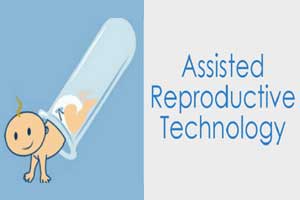- Home
- Editorial
- News
- Practice Guidelines
- Anesthesiology Guidelines
- Cancer Guidelines
- Cardiac Sciences Guidelines
- Critical Care Guidelines
- Dentistry Guidelines
- Dermatology Guidelines
- Diabetes and Endo Guidelines
- Diagnostics Guidelines
- ENT Guidelines
- Featured Practice Guidelines
- Gastroenterology Guidelines
- Geriatrics Guidelines
- Medicine Guidelines
- Nephrology Guidelines
- Neurosciences Guidelines
- Obs and Gynae Guidelines
- Ophthalmology Guidelines
- Orthopaedics Guidelines
- Paediatrics Guidelines
- Psychiatry Guidelines
- Pulmonology Guidelines
- Radiology Guidelines
- Surgery Guidelines
- Urology Guidelines
Unsuccessful assisted reproduction cycles increase risk of PE

Women having unsuccessful cycles of assisted reproductive technologies (ART) are at a higher risk for pulmonary embolism (PE), according to a new study published in the journal Thrombosis and Haemostasis.
Venous thromboembolism (VTE) during or after assisted reproductive technologies is predicted to rise due to the increased number of women undergoing this technique.
Elvira Grandone, Thrombosis and Haemostasis Unit, I.R.C.C.S. Casa Sollievo della Sofferenza, S. Giovanni Rotondo, Italy, and colleagues presented data collected in the RIETE registry up to October 2016.
Also Read: IVF children at increased risk of high BP in their teenage years: JACC
Key Findings:
- Overall, 41 (0.6%) out of 6,718 women of childbearing age with VTE had an ART-related event.
- Most of them underwent autologous ART cycles; 23 had isolated deep vein thrombosis (DVT) (56.1%), 12 isolated pulmonary embolism (PE) (29.3%) and 6 simultaneous occurrences of both the events (14.6%).
- VTE occurred in 20 successful and 21 unsuccessful (i.e. not resulting in a clinical pregnancy) ART cycles.
- No recurrence was observed at 90 days. Logistic regression showed that isolated PE was significantly more frequent than DVT alone or combined with PE in unsuccessful in vitro fertilization (IVF) (odds ratio [OR]: 4.13, 95% confidence interval [CI]: 1.4-12.4), as well as in contraceptive users (OR: 2.96, 95% CI: 1.95-4.5) and in puerperium (OR: 1.96, 95% CI: 1.16-3.3).
- After grouping isolated PE and DVT + PE, we found that PE was significantly more frequent in women with unsuccessful IVF and higher body mass index (OR: 5.0, 95% CI: 1.2-20.7 and OR: 1.0, 95%CI: 1.0-1.1, respectively).
Also Read: Fertility Treatment does not increase risk of Uterine or breast cancer – BMJ
"These data document a higher risk of PE in unsuccessful cycles than in successful ones. The risk is higher than that observed during pregnancy, puerperium, and contraception," concluded the authors.
About Venous Thromboembolism
VTE is a condition characterized by the formation of blood clots most often in the deep veins of arm, groin or leg (known as deep vein thrombosis, DVT) and travels in the circulation, lodging in the lungs (known as pulmonary embolism, PE).
For further reference log on to 10.1055/s-0038-1673402

Disclaimer: This site is primarily intended for healthcare professionals. Any content/information on this website does not replace the advice of medical and/or health professionals and should not be construed as medical/diagnostic advice/endorsement or prescription. Use of this site is subject to our terms of use, privacy policy, advertisement policy. © 2020 Minerva Medical Treatment Pvt Ltd